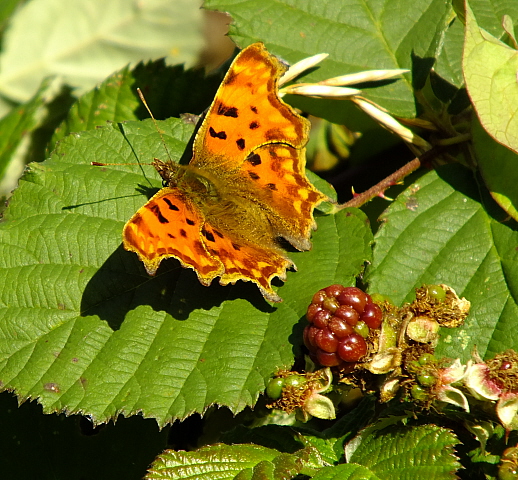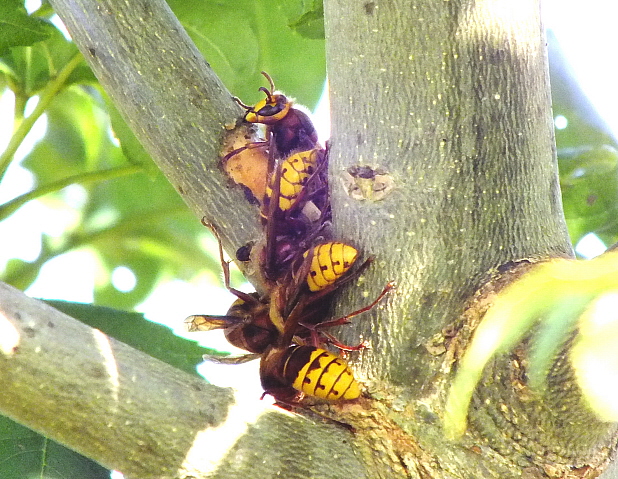Glorious Otmoor in the sunshine. Flotilla of ducks from the first screen.
Knowing that the Otmoor Birding boys would be there. And more stuff seems to turn up at weekends, when Peter Barker, Jason and co are there (bird magnets). Meeting up with Dave Cuddsdon in the car park it soon became clear that my theory would be proved correct. As we walked along the bridleway (Greenaways) I noticed them halfway down the path to the 1st screen. Whatever it was they had found was obviously something good. As they were paying a great deal of attention to it. Walking the same path after them. All i could find were three Whinchats on the blue plastic posts.
Meeting up with Pat Galka. He showed me a terrific photo, he had just taken of a Goldcrest, he had found behind the 1st screen. Very kindly he sent me the photo to show on my blog. Cheers Pat. Brilliant!
 |
(C) Pat Galka |
 |
| (C) Peter Coombes |
The second screen area produced a very smart Lesser Whitethroat and a male Blackcap. There seemed to be a great deal more Warblers around than there had been over the previous days. Half way along the track back to the first screen, I found a mixed flock of Warblers and Tits. Another Lesser Whitethroat, a female Blackcap, several Reed and Sedge Warblers, Chiffchaffs, two willow Warblers, a couple of Great Tits and lots of Blue Tits.
Back to front Blue Tit.
On the insect front... There are still plenty of Common Darters and Migrant Hawker Dragonflies around. Butterflies sightings were up from the previous Thursday. With this lovely Comma feeding on the withered flowers among the Blackberries.
The swarm of Hornets are still busy stripping the bark on the Ash sapling. One Hornet was found chewing on a nearby fencepost.
Below a View of part of the Hornets awesome armoury. Those powerful jaws that can tear a large fly or even a wasp apart in seconds.
Hornets stripping bark.
Last word on Saturday... Back to the birds. I try very hard to take reasonable photos being a novice. At least i am enjoying learning and it has added an extra enjoyment to my birding and other wildlife experiences. Until i meet people whose photographic skill just blows me out of the water. I have met a few of those at Otmoor and i feel i must mention one in particular. "Andrew Marshall." Andrew has very kindly sent me three photos he took at Otmoor on Saturday to use on my blog. when i saw them i just said out loud WOW! The first is a Kingfisher in flight. Taken from the first screen, he has not only captured the bird but also its reflection in the water. What a superb shot.
 |
| (C) Andrew Marshall |
 |
| (C) Andrew Marshall |
 |
| (C) Andrew Marshall |
Tuesday 25th September....
A very strong cool wind meant that a lot of the smaller birds were keeping their heads down. far fewer Warblers were seen. Apart from a small flock of six Chiffchaffs hunkered down low in the bare branches, in the bushes towards the end of the path on Greenaways. Greenaways early a,m saw a large movement of Swallows, House Martins, Sand Martins and a solitary Wheatear. Swallows were too numerous to count. They were everywhere you looked. Especially around the Cows.
Smaller parties of House Martins were seen, but still numerous. I saw five Sand Martins flying along with their cousins. Meadow Pipits were again very obvious with small flocks seen on all parts of the reserve.
It doesn't always have to be a rare or scarce bird to give one a buzz. Getting close to even the most common of Otmoor birds can give a huge amount of enjoyment. I had that experience on Tuesday. When this little Reed Bunting followed me along the path to the first screen. A close look at its plumage reveals a wonderful patternation of subtle colours.
The first screen was fairly quiet apart from a flock of fifty or so Mallard. Interspersed with the odd Teal, Tufted and Gadwall.
Then the highlight of the day for me, came half way down the path to the second screen. As i was looking through my binoculars at a flock of Lapwing out on the far side of the field to see if anything else was amongst them. A flash of black and white shot past my view. A rocket propelled Peregrine Falcon, with the wind behind it sped at lightning speed along, then over the bushes, along the path and disappeared over the second screen. The whole event took only seconds. What a fantastic bird! The speed was unbelievable.
Birding was fairly quiet today, species wise. (Not the weekend see) (Where's the bird magnets when you need them). But an old saying my father told me, when he was a Royal Marine Commando fighting in the jungles of Borneo and Malaya. His Gurkha instructors used to drum into the Marines. "Walk slowly, see everything". Not quite the same as birding i know. But a useful saying none the less. Even if the birding is slow, there is always something to look and wonder at in the natural world.
Natures beauty among the thorns. (second screen)
Insects...
Lots of Common Darters and Migrant Hawkers around today especially along the path between the screens. This Caddis type fly was hanging on for dear life on the second screen. Blowing around in the strong wind like a flag.
Now for something completely different.
Migrant Hawker__ Southern Hawker. I:D
There can be a lot of variation in colours of the Migrant Hawker. As these first two photos show. Southern Hawkers are often confused with Migrants.
I am reliably informed, the best way to I:d a southern Hawker is the coloured pairs of spots on the last two tail segments are joined to form bands rather than spots. And the triangular coloured mark on the first segment is elongated into the second segment. Also the Coloured bands on the Thorax are wider and not so uniform.
I have been guilty of misidentifying southern hawkers before. But i think i have got this right. All of the above photos are of migrant Hawkers. Unless of course you know different.
Below are photos of a Southern Hawker i took earlier in the summer.
Note the coloured spots on the last two tail segments are joined. Especially the second last one that has formed a band. The elongated triangular mark on the first segment can be clearly seen. you can also just see the stripes on the side of the thorax are much wider.
 |
| Mute Swan |
 |
| Little Egret. All Photos (C) Peter Coombes. Unless specified. |



























No comments:
Post a Comment